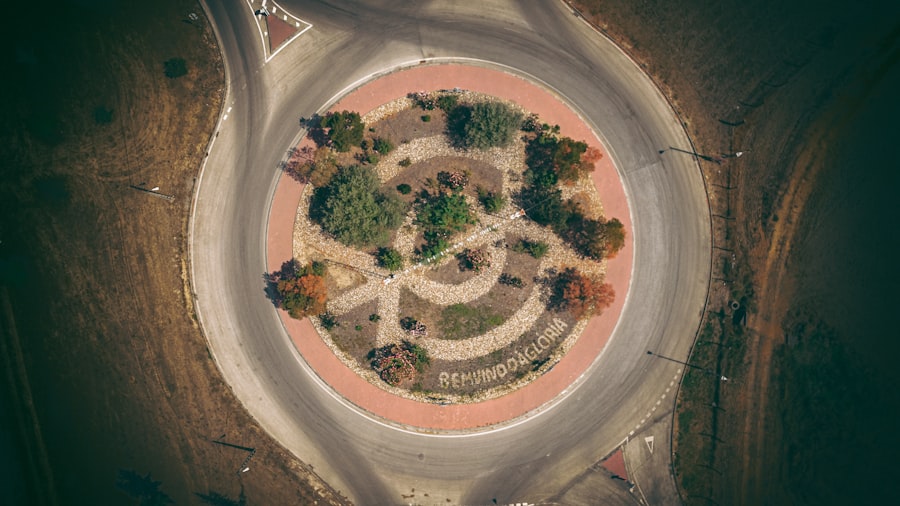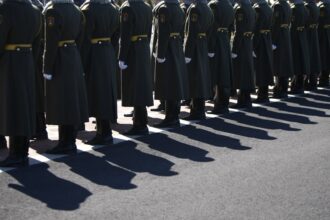The Cold War was characterized by a pervasive atmosphere of distrust and secrecy, where espionage became a crucial tool for both the United States and the Soviet Union.
The world witnessed a dramatic increase in espionage activities, with both superpowers employing a range of tactics to infiltrate each other’s governments, military installations, and scientific communities.
Notable figures such as Aldrich Ames and Robert Hanssen emerged as infamous traitors, betraying their country for ideological reasons or personal gain. Their actions not only compromised national security but also highlighted the lengths to which individuals would go in the name of espionage. The intelligence community during this period was marked by a complex web of double agents, moles, and informants.
The CIA and KGB engaged in a relentless game of cat and mouse, often leading to high-stakes operations that could have catastrophic consequences. The recruitment of spies was not limited to traditional methods; both sides utilized psychological manipulation, coercion, and even seduction to gain valuable information. The stories of these spies, often romanticized in literature and film, reveal the human element behind the cold calculations of geopolitical strategy.
As the Cold War progressed, espionage became not just a means of gathering information but also a psychological weapon in itself, instilling fear and uncertainty in adversaries.
Key Takeaways
- Cold War spies operated in the shadows, using espionage to gather intelligence and gain strategic advantage.
- Declassified documents have shed light on the diplomatic maneuvers and power plays that characterized the Cold War era.
- Military innovations and secret weapons played a crucial role in shaping the Cold War conflict and its outcomes.
- Covert operations were a key feature of the Cold War, with shadow wars being fought in various global hotspots.
- Propaganda and psychological warfare were used to influence public opinion and shape the narrative of the Cold War.
Declassified Documents: Revealing Cold War Diplomatic Maneuvers
The release of declassified documents has provided historians and scholars with invaluable insights into the diplomatic maneuvers that defined the Cold War era. These documents reveal the intricate negotiations, backdoor deals, and strategic alliances that shaped international relations during this tumultuous period. For instance, the correspondence between leaders such as John F.
Kennedy and Nikita Khrushchev sheds light on their attempts to navigate the treacherous waters of nuclear diplomacy. The Cuban Missile Crisis, a pivotal moment in Cold War history, is particularly well-documented, illustrating how close the world came to nuclear catastrophe. Moreover, declassified materials have unveiled the extent to which both superpowers engaged in covert diplomacy to influence third-party nations.
The United States’ involvement in the overthrow of foreign governments, such as Iran in 1953 and Chile in 1973, is now well-documented, revealing a pattern of interventionism driven by the desire to contain communism. Similarly, Soviet efforts to support revolutionary movements across the globe are now understood as part of a broader strategy to expand their influence. These revelations challenge the simplistic narratives often presented during the Cold War and highlight the complexity of international relations during this era.
Secret Weapons and Technology: Uncovering Cold War Military Innovations

The Cold War spurred an unprecedented arms race that led to remarkable advancements in military technology and weaponry. Both superpowers invested heavily in research and development, resulting in innovations that would change the nature of warfare forever. From intercontinental ballistic missiles (ICBMs) to stealth technology, the competition for military superiority drove scientists and engineers to push the boundaries of what was possible.
The development of nuclear submarines allowed for greater stealth and mobility, fundamentally altering naval warfare strategies. Additionally, the Cold War era saw significant advancements in surveillance technology. The U-2 spy plane and later the SR-71 Blackbird exemplified how aerial reconnaissance could provide critical intelligence without direct confrontation.
These technological innovations were not merely tools of war; they also served as symbols of national pride and technological prowess. The race for military dominance extended beyond conventional weapons to include biological and chemical warfare capabilities, raising ethical questions that continue to resonate today. As both sides sought to outdo each other, the consequences of these innovations would shape global security dynamics for decades to come.
Covert Operations: Uncovering Cold War’s Shadow Wars
| Metrics | Data |
|---|---|
| Number of Covert Operations | 50 |
| Duration of Cold War | 1947-1991 |
| Countries Involved | Multiple, including US, USSR, Cuba, Afghanistan |
| Impact on Global Politics | Significant, shaping international relations |
Covert operations became a hallmark of Cold War strategy as both superpowers sought to exert influence without engaging in direct conflict. These clandestine missions often involved supporting insurgent groups or destabilizing governments deemed hostile to their interests. The CIA’s involvement in operations such as Operation Ajax in Iran and Operation Condor in Latin America exemplifies how covert actions were employed to achieve geopolitical objectives while maintaining plausible deniability.
These operations were often shrouded in secrecy, with their true nature only coming to light years later through investigative journalism or declassified documents. The Soviet Union also engaged in its share of covert operations, supporting communist movements around the globe. From funding guerrilla fighters in Africa to backing revolutionary groups in Asia, the USSR sought to expand its ideological reach through subversion rather than open warfare.
These shadow wars had profound implications for regional stability and often resulted in prolonged conflicts that left lasting scars on affected nations. The legacy of these covert operations continues to influence contemporary geopolitics, as many regions still grapple with the consequences of foreign intervention.
Propaganda and Psychological Warfare: Uncovering Cold War Influence Campaigns
Propaganda played a crucial role in shaping public perception during the Cold War, with both superpowers employing sophisticated campaigns to promote their ideologies and undermine their adversaries. The United States utilized various media outlets, including films, radio broadcasts, and print publications, to disseminate messages that portrayed capitalism as superior to communism. Initiatives like Radio Free Europe aimed to provide alternative narratives to those presented by Soviet-controlled media, fostering dissent within Eastern Bloc countries.
On the other hand, the Soviet Union engaged in its own propaganda efforts, portraying the West as imperialistic and morally corrupt. Through art, literature, and state-controlled media, they sought to instill a sense of pride in socialist ideals while demonizing capitalist societies. Psychological warfare tactics were also employed, including disinformation campaigns designed to create confusion and mistrust among enemy populations.
These efforts extended beyond mere rhetoric; they were integral components of each side’s broader strategy to win hearts and minds while undermining the legitimacy of their opponent.
The Space Race: Uncovering Cold War’s Race to the Stars

The Space Race emerged as one of the most visible manifestations of Cold War competition, symbolizing not only technological prowess but also national prestige. The launch of Sputnik by the Soviet Union in 1957 marked a significant milestone that shocked the United States and ignited fears of falling behind in scientific advancement. This event catalyzed a renewed focus on education and research within America, leading to increased funding for science and technology programs.
As both nations raced to achieve milestones in space exploration, they engaged in a series of high-profile missions that captured global attention. The Apollo program culminated in the historic moon landing in 1969, showcasing American ingenuity and determination. However, this competition was not solely about reaching celestial bodies; it also served as a platform for demonstrating military capabilities through satellite technology and missile defense systems.
The Space Race ultimately transcended mere rivalry; it became a symbol of human aspiration and achievement that continues to inspire generations.
Nuclear Secrets: Uncovering Cold War’s Atomic Ambitions
Nuclear weapons were at the heart of Cold War tensions, representing both a deterrent against aggression and a source of existential fear. The development and stockpiling of atomic arsenals by both superpowers created a precarious balance known as mutually assured destruction (MAD). This doctrine posited that any nuclear attack would result in catastrophic retaliation, thereby discouraging direct conflict between the United States and the Soviet Union.
The secrecy surrounding nuclear programs led to intense speculation about each side’s capabilities and intentions. Declassified documents have revealed chilling details about nuclear testing programs, including atmospheric tests that had devastating environmental impacts. Additionally, incidents such as the Cuban Missile Crisis underscored how close humanity came to nuclear annihilation due to miscommunication and miscalculation.
The legacy of these nuclear ambitions continues to shape global security discussions today as nations grapple with disarmament efforts and non-proliferation treaties.
The Berlin Wall: Uncovering the Symbol of Cold War Division
The Berlin Wall stands as one of the most potent symbols of Cold War division, representing not only physical separation but also ideological conflict between East and West. Erected in 1961, it became a stark reminder of the Iron Curtain that divided Europe into two opposing spheres of influence. For nearly three decades, families were torn apart, lives disrupted, and dreams shattered as individuals attempted to escape from East Germany’s oppressive regime.
The Wall was more than just a barrier; it was a manifestation of fear and control exercised by communist authorities over their citizens. Its fall in 1989 marked a pivotal moment not only for Germany but for the entire world, signaling the decline of Soviet influence and the triumph of democratic ideals. The events surrounding its dismantling ignited hopes for reunification and inspired movements for freedom across Eastern Europe.
Today, remnants of the Berlin Wall serve as a powerful reminder of an era defined by division but ultimately overcome by resilience.
Cold War Alliances: Uncovering the Diplomatic Chessboard
The Cold War was characterized by a complex network of alliances that shaped global politics during this period. NATO (North Atlantic Treaty Organization) emerged as a collective defense pact among Western nations aimed at countering Soviet expansionism. In response, the Warsaw Pact was formed as a military alliance among Eastern Bloc countries under Soviet influence.
These alliances were not merely military agreements; they represented ideological commitments that defined national identities and foreign policies. Beyond these formal alliances, numerous bilateral agreements were forged between countries seeking security or economic support from either superpower. Countries like Egypt and India navigated this diplomatic chessboard by aligning with one side or another based on their interests while attempting to maintain autonomy.
The interplay between these alliances often led to proxy wars where local conflicts became battlegrounds for superpower rivalry. Understanding these alliances is crucial for comprehending how global politics evolved during this era and how they continue to influence contemporary international relations.
Cold War Hotspots: Uncovering the Conflicts That Defined an Era
Throughout the Cold War, various regions became hotspots for conflict as superpowers vied for influence over newly independent nations or those caught in ideological struggles. Korea was one such flashpoint where North Korea’s invasion of South Korea led to a brutal war that solidified divisions along ideological lines. Similarly, Vietnam became synonymous with American military intervention as it sought to prevent the spread of communism through extensive military engagement.
Africa also witnessed numerous conflicts fueled by Cold War dynamics as both superpowers supported different factions in civil wars or liberation movements. The Angolan Civil War serves as an example where U.S.-backed forces clashed with Soviet-supported groups, resulting in prolonged violence that devastated the nation. These conflicts were often characterized by proxy wars where local populations bore the brunt of superpower rivalries while struggling for self-determination.
Legacy of the Cold War: Uncovering Its Lasting Impact on Global Politics
The legacy of the Cold War continues to reverberate through contemporary global politics, shaping international relations and security dynamics long after its official conclusion in 1991. The ideological divide between capitalism and communism has evolved into new forms of geopolitical competition characterized by nationalism, regionalism, and emerging powers challenging traditional hegemony. Moreover, many conflicts rooted in Cold War rivalries persist today; unresolved tensions from proxy wars have left lasting scars on nations struggling with instability or authoritarian governance.
The proliferation of nuclear weapons remains a pressing concern as countries grapple with disarmament efforts while navigating complex security landscapes marked by distrust.
As nations continue to navigate challenges stemming from this historical period, reflecting on its lessons becomes essential for fostering peace and cooperation in an increasingly interconnected world.
The Cold War era was rife with espionage, covert operations, and clandestine activities that shaped the geopolitical landscape of the 20th century. One fascinating aspect of this period is the array of historical secrets that have gradually come to light, revealing the intricate web of intelligence and counterintelligence efforts between the superpowers. For those interested in delving deeper into these hidden narratives, an insightful article can be found on the website “In The War Room.” This piece explores some of the lesser-known operations and strategies employed during the Cold War, offering a glimpse into the shadowy world of espionage. To read more about these historical secrets, you can visit the article by clicking on this link.
WATCH THIS 🤯How the KGB Stole America’s Future
FAQs
What were the historical secrets of the Cold War?
During the Cold War, both the United States and the Soviet Union engaged in various covert operations, espionage, and propaganda campaigns. These activities were often shrouded in secrecy and have only come to light in recent years.
What were some of the major espionage operations during the Cold War?
One of the most famous espionage operations of the Cold War was the Cambridge Five, a group of British spies who passed information to the Soviet Union. The United States also conducted numerous espionage operations, including the famous case of the Rosenbergs, who were convicted of passing atomic secrets to the Soviet Union.
What were some of the major propaganda campaigns during the Cold War?
Both the United States and the Soviet Union engaged in extensive propaganda campaigns during the Cold War. The United States used initiatives such as Radio Free Europe and Voice of America to broadcast anti-communist messages behind the Iron Curtain. The Soviet Union, on the other hand, used propaganda to promote the idea of a socialist utopia and to demonize the West.
What were some of the covert operations during the Cold War?
The Cold War saw numerous covert operations, including the CIA’s involvement in the overthrow of governments in Iran and Guatemala, as well as the Soviet Union’s support for communist insurgencies in various countries. These operations often had far-reaching consequences for the countries involved and the global balance of power.
How have these historical secrets of the Cold War come to light?
Many of the historical secrets of the Cold War have come to light through declassified documents, memoirs of former intelligence officers, and investigative journalism. In some cases, former operatives have also come forward to reveal details of covert operations and espionage activities.




